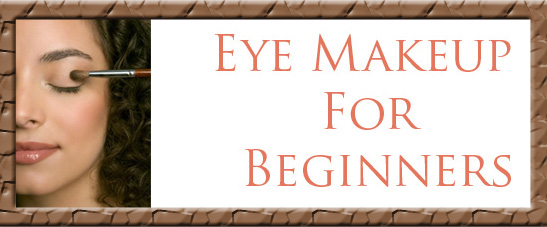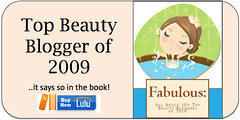India's Beauty experts come together to fight age old beauty myth's !
|
We know it's been declared by almost every magazine that guzzling eight glasses of water a day is essential – but the shocking truth is that there are absolutely no studies that have ever proved you must drink this much. Dermatologists say that the key is to drink what's appropriate for you instead of paying too much attention to the exact amount. The right amount can vary from person to person depending on your weight and how effectively your body uses that water. And there is such a thing as over-hydrating – drinking too much water, but you'd have to drink a lot to get to that point. Dayenne skincare founder, Raj Bhachu says ‘The terms natural and herbal, when put together with skincare generally resonate ideas of gentleness and effectiveness. Recently, the beauty industry has attempted to package every single natural ingredient and cleverly market the products as being gentle simply because they are derived from herbs or nature. However, caution must be exercised when choosing products that you intend to apply to your skin because some herbal or natural products also include various other ingredients, some of which may not necessarily be natural.’ 3.THE Until recently soap had a bad reputation as being pore-clogging, drying and detergent-laden. “This is no longer the case with the new batch of soaps, which are milder, fragrance free and often dermatologically approved”, says Raj Bacchu, of Dayenne Cosmetique. When using soap, ensure you remove any residue with plenty of water and pat the face dry with an absorbent, non-abrasive towel. Choose a soap that is complimentary to your skin type. Clinique Facial Soap, ($10.50) is a mild, fragrance free cleansing soap, ideal for dry skins. ‘It is super-fatted, which makes it specifically designed to help protect the skin lipids and has been buffered with ingredients like petrolatum and glycerin to assure that skin is not stripped taut and dry during the cleansing process’, says Debbie D'Aquino, Vice President Global Product Development at Clinique. Oily skins should go for a non-greasy soap such as the Dayenne Soap Bar, (£9) which is great for cleansing oily areas of the face, neck, bust, back and shoulders that may be prone to breaking out in acne. It achieves ultra deep cleansing without damaging the skin's protective acid mantle (pH). 4.THE MYTH: APPLYING OIL TO THE HAIR WILL MAKE IT GROW No matter what your mother or grandmother keeps telling you the truth is that the actual oil does nothing to promote hair growth. However, regular head massages can stimulate the circulation in the scalp, which causes the hair bulb to be flooded with the nutrients necessary for healthy hair growth. The oil itself will only work to nourish and condition the hair and make it appear shiny and luscious. 5.THE MYTH: SKIN LIGHTENING CREAMS MAKE YOUR SKIN FAIRER ‘Harsh chemical bleaching ingredients such as hydroquinone and mercury and kojic acid can lighten even the darkest of skin tones, but, they do this by totally stripping the skin of its melanin, which is needed to protect the skin from UVA and UVB rays. So whilst the results can be permanent, they are by NO means recommended’, says Athar Iman from Fairness Direct. Skin specialist and scientist, Sujata Jolly says ‘Certain skin lightening ingredients such as hydroquinone, mercury (which are banned in the EU) and kojic acid (banned in Switzerland, Japan and Korea) can lead to permanent, long term damage to the skin and in extreme cases even liver damage. From a purely cosmetic perspective rather than the desired effect of lightening the skin the bleaching agent can actually cause a darkening of the area. This then causes the user to apply more of the product to the skin, hence entering into a vicious cycle, which can eventually lead to ochrinosis – a darkening and thickening of the skin.’ So ladies, think twice before slathering on the creams and do your research on its ingredients. The good news is that there are products that can help you achieve an even complexion without the risk of any side effects. ‘Plant extracts such as willowbark, liquorice, mulberry and Vitamin C in their natural form are all ingredients that do not penetrate the basal layer of the skin so do not inhibit the production of melanin - making them a safe alternative. These natural extracts have been used effectively for centuries to help achieve a clearer and more even complexion’, adds Sujata Jolly. 6.THE MYTH: OILY SKIN DOESN'T NEED A MOISTURISER The moisturising level of the skin is not related to the sebum amount produced by the sebaceous gland (sweat glands) in the epidermis. The skincare experts at Neutrogena say, “your skin needs moisture to function at its best. Even oily skin can have low moisture levels. That's why it's important to use a moisturiser no matter what your skin condition is”. Choose the correct formulation - oil free, non-comedogenic and water-based are your best bet. 7.THE MYTH: WATERPROOF SUNSCREEN WILL LAST ALL DAY Dermatologists stress that sunscreen should be reapplied every two hours or immediately after swimming. The term ‘waterproof’ is misleading and was banned by the FDA. These products, that stay put for up to 40-minutes in the water are now more accurately labelled ‘water resistant’. 8.THE MYTH: TEST THE COLOUR OF FOUNDATION ON THE BACK OF YOUR HAND The colour of the skin on the hands is usually a lot darker than the colour of the skin on our face, mainly due to the fact that they have been exposed to a lot more UV light and a lot less exfoliaton. ‘The best way to test foundation is by drawing stripes on the jaw line and examining them in natural light. The colour that blends in perfectly is your shade’, says make-up artist Nina Haider. 9.THE MYTH: LIP PLUMPERS CAN CHANGE THE SIZE OF YOUR LIPS The majority of lip plumping sticks and glosses contain ingredients such as cinnamon, chilli and grapefruit that work by stimulating blood flow to the lips causing them to feel tingly and slightly numb. Lips volume may increase for an hour or so, but results are only temporary. 10.THE MYTH: APPLYING TOOTHPASTE ON A SPOT WILL MAKE IT DISSAPEAR Although it will dry the pimple – fluoride and tartar control ingredients found in toothpastes can actually be quite irritating. Dr Manjit Kaur, Specialist Registrar in Dermatology warns, ‘you need to be careful with this approach as the drying effect of the toothpaste could irritate the skin or result in a skin reaction’. For instant spot banishing, try the bacteria killing Zeno (£129, myzenoeurope.com) 11. THE MYTH: SLEEPING ON A SILK PILLOW PREVENTS WRINKLES The act of pressing your face into a hard cotton pillow makes your skin crease. As we get older the sleep creases we wake up with take longer to smooth because the amount of collagen and elastic tissue - the skin's spring-back mechanism becomes weaker. Dr David Orentreich, Clinique's Presiding Dermatologist says, ‘It doesn't matter what your pillow case is made from, the only way to prevent sleep creases is by sleeping on your back, so you don't squash your face. Not easy, but you can train yourself with an orthopedic pillow.’ 12. THE MYTH: REGULAR TRIMS WILL HELP HAIR TO GROW FASTER Each hair strand is a thread of dead protein, which means the root of the hair strand has no idea of what is happening at the tip. Trichologist Phillip Kingsley says that ‘there is no scientific or physiological evidence or reason why cutting hair should make it grow faster’. Hair can be compared to canes of bamboo: a long cane bends and flexes easily, but when cut short it is impossible to bend and feels stronger, even though it is the same cane! Similarly with hair: shorter hair feels stronger. Also, when short hair grows longer it is more noticeable than when long hair grows longer. Unfortunately regular trips to the salon won't make your hair grow faster, but regular trimming of straggly, frayed ends can help it look fuller and healthier. 13. THE MYTH: SPLIT ENDS CAN BE REPAIRED While some conditioners and serums can temporarily 'glue' split ends back together, there is no way to re-attach the hair shaft permanently when the individual layers of cells separate. The only way of getting rid of them altogether is to snip the hair beyond the point of the split. 14. THE MYTH: PLUMPING YOUR MASCARA WAND WILL GET RID OF CLUMPS Plumping the wand only fills the tube with air making the formula dry out faster and clump more. It's inevitable for the pigment to start clinging to the wand after the initial few applications. Your best solution is to wipe the wand with a paper towel, as opposed to a tissue before each application. 15.THE MYTH: SHAVING CAUSES THICKER REGROWTH ‘There's no evidence that hair grows back thicker after shaving,’ says King Of Shaves chairman, Hiten Dayal. Prickly stubble just feels like coarser regrowth. But exfoliating, then using a moisturising shave prep, helps skin to stay smoother for longer 16. THE MYTH: YOU SHOULDN’T WASH YOUR HAIR DAILY ‘Without a doubt, shampooing is the most effective way to keep hair shiny and healthy,’ says trichologist Philip Kingsley, author of the Hair Bible. ‘If it’s not, you’re either using the wrong product or using it incorrectly. Think about how dirty your face gets by the end of the day, and you take you hair to the same places! You wouldn't dream of not washing or cleansing your face on a daily basis, so why leave out your hair? Frequent shampooing is the single most important way to happy hair days’, says Philip Kingsley. New York dermatologist Dennis Gross adds, ‘If hair seems dry and brittle, then shampoo as needed. But if it looks healthy, there’s no reason to stop.’ 17. THE MYTH: CAFFIENE AND CHOCOLATE CAUSE BREAKOUT Dr Manjit Kaur esays, ‘There is no scientific evidence to suggest that spots are caused by over indulgence in foods such as chocolate or coffee. Some people feel their spots are aggravated by certain foods so it makes sense to avoid them as long as you're still eating a balanced diet.’ The exact cause of acne is unknown, but doctors believe it results from several related factors including excess grease production (sebum) which is often driven by rising hormone levels in teenagers during puberty, hereditary factors, blocking of pores due to a build up of dead skin cells. |

 MYTH:
MYTH: 








0 comments
Post a Comment